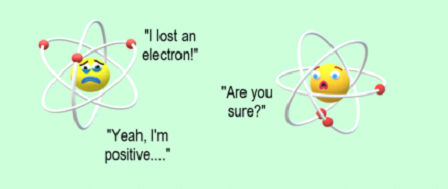The beginning of the 20th century was the start of revolution in the field of physics. The physicists developed the mysteries of quantum physics and discovered that a lot of the rules they were swearing by had to take a backseat as they had stopped applying to their discoveries!
We can take the example of the great debate about the nature of light that went on for a long time, arguing if it existed in the form of waves or particles, until, its true dual nature was put forward. It was discovered that it was neither and both at the same time as it behaves like both on occasions. Scientists also discovered that other particles also act the same, like electrons.
One German theoretical physicist also made a life-changing discovery in 1925 that would change the perspective of all physicists in the era. This guy was Werner Heisenberg and his theory was named as the Heisenberg’s Uncertainty Principle.
Defining the Uncertainty Principle
Forming a part of quantum physics, the uncertainty principle is a big part of physics. The uncertainty principle states that we cannot know both the speed of a particle and its position with accuracy. Particles like light, electrons, or protons. We can either get the accurate details of its position or its speed. the more we try to nail down its speed, the less we’ll know about its position,
Even though this principle is heavily used in quantum physics, but this principle can also be applied to other mathematical and classical physics methods, meaning any object that acts like a wave, are affected by this principle.
To understand this principle, we can take the example of a moving electron. Imagine, you’re observing this electron under a microscope to measure its speed and position. You can see the electron under this microscope because the light bounces off of it and reaches your eye.
However, whenever the light bounces off of it, it affects the electrons’ speed and position. Why is that?
Well, light is also composed of tiny photons that are particles, containing their own momentum. In bigger objects, this momentum is quite a lot like a bat hitting a ball would have loads of momentum, but this light is composed of tiny particles called photons and the momentum of these particles depend on the wavelength of light. Different wavelengths of light have different colors and this can be controlled in a lab.
Here, if you want to observe the position of the electron, you will have to use a high-velocity light, which is very bright as it makes the electron visible. As the light bounces off of it, it will affect the velocity of the electron, making it impossible for you to perceive the position of the electron as well as the speed.
However, if you want to detect the velocity of the electron, you will have to use the photons that have hardly any momentum, and they don’t affect the speed of the electron at all. But if you observe this electron with a photon with no velocity, it means, you’re making the observation in a very dim environment, therefore, you won’t be able to determine the position of the electron as it won’t be visible in the dim light.
Case study of Uncertainty Principle
You can take the example of the uncertainty principle when you observe a rollercoaster. When looking from a distance, when the rollercoaster reaches its maximum peak, you can take a picture of it. This way, you can easily determine the position of the roller-coaster, but determining its actual velocity from the photograph is impossible.
As the roller-coaster goes down the hill, you can determine its speed, but calculating its exact position will be very difficult. Therefore, the uncertainty principle puts forward a trade-off between various variables that are at play at the same time. Mostly it is between the variable of position and speed. deterring both accurately at the same time is mostly impossible.
The Consequences of Heisenberg’s Principle
Due to this principle, we can’t know both, we have to choose to know either of the two. Whether to observe the particle nature of the electron or monitor the wave nature. If you choose to use an experiment that allows you to observe the electron in its particle form, then you won’t be able to detect its wave-like properties.
One thing that electrons and matter have in common is that they both can be deflected by magnetic or electrical fields. However, electrons can interfere with each other. These electrons can also perform the process of diffraction, meaning they can pass through small slits and as they have wave-like qualities, they bend out after passing through the slit.
These wave-like electrons start out in parallel motion, but after they pass through this slit, they bend. Now the troughs and peaks of the wavelength have interfered with each other, so as a result of going through the slit, the waves are small in some places and bigger in others, giving the waves different frequencies.
These results are like seeing waves from different boats interfering with each other. Therefore, everything that has a dual nature of light and wave will show you the uncertainty principle.


